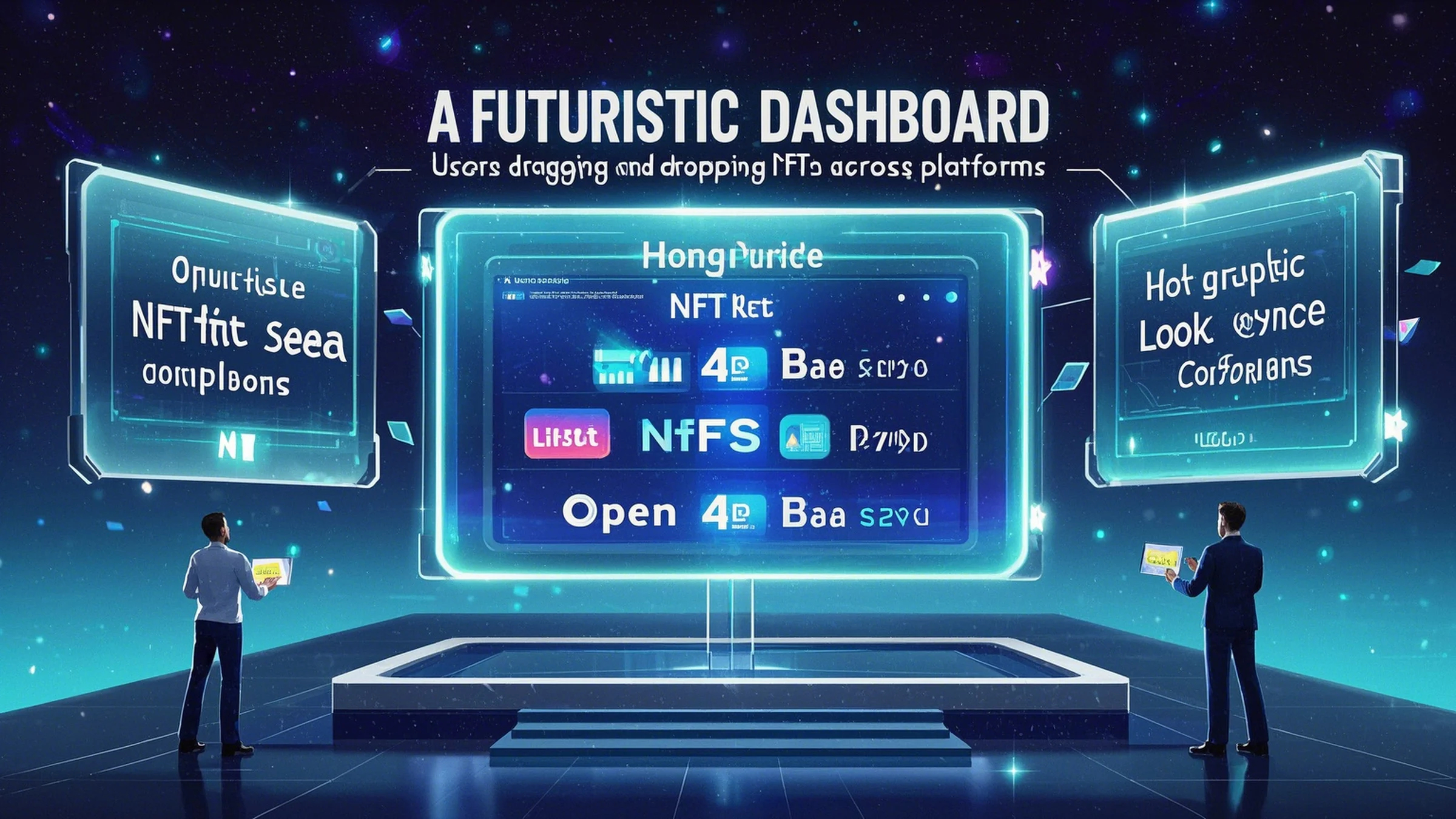The NFT (Non-Fungible Token) market has grown exponentially over the past few years, with no signs of slowing down in 2025. As the industry evolves, so do the expectations of collectors, artists, and investors. To build a profitable NFT marketplace in this competitive landscape, you need a well-thought-out strategy that addresses market trends, user needs, and technological advancements.

Step 1: Conduct Comprehensive Market Research
Before diving into development, it’s crucial to understand the current state of the NFT market and identify gaps that your platform can fill. Conduct thorough market research to analyze:
Trends and niches: Identify which NFT genres (e.g., digital art, gaming, virtual real estate) are gaining traction.
Target audience: Determine who your users will be (artists, collectors, brands, or all of the above).
Competitors: Study existing NFT platforms to understand their strengths, weaknesses, and areas where you can differentiate yourself.
For example, if you notice that most NFT marketplaces cater to digital artists but lack tools for fractional ownership, you can position your platform as a leader in fractional NFTs.
Step 2: Define Your Unique Value Proposition
Your marketplace must offer something unique to stand out in a crowded industry. Consider the following questions:
What problem are you solving for artists, collectors, or creators?
What makes your platform better than existing options?
Can you integrate additional features like analytics, DAO governance, or fiat-to-crypto conversion?
A strong value proposition could be a combination of user-friendly design, low fees, advanced features, and a focus on a specific niche.
Step 3: Design an Intuitive User Experience
User experience (UX) is critical for retaining users in the NFT space. A confusing or cumbersome interface can drive potential users away. Focus on:
Simplicity: Ensure that buying, selling, and minting NFTs is straightforward.
Customization: Allow users to personalize their profiles, collections, and listings.
Security: Implement robust security features to protect user data and NFTs.
Consider hiring a UX designer or using tools like Figma to prototype your interface before full-scale development.
Step 4: Develop a Tokenomics Model
A successful NFT marketplace relies on a well-designed tokenomics model. Tokens can serve multiple purposes, such as governance, rewards, or utility. Here are some ideas:
Platform tokens (e.g., $MINT): Users can earn tokens by staking, listing NFTs, or participating in DAO decisions.
Rewards tokens: Offer tokens as incentives for referrals, daily login bonuses, or milestone achievements.
Utility tokens: Enable token holders to access exclusive features, discounts, or early access to new collections.
Ensure that your tokenomics model is transparent and aligns with your platform’s long-term goals.
Step 5: Build a Strong Community
Community-driven platforms often outperform their competitors because they foster loyalty and engagement. Start building your community early by:
Launching a Telegram or Discord group for future users.
Creating educational content about NFTs and blockchain technology.
Collaborating with artists, influencers, or brands to promote your platform.
A thriving community will not only help you launch successfully but also provide valuable feedback as you grow.
Executing Your NFT Marketplace Vision
With the foundation laid, it’s time to bring your vision to life. This phase involves technical development, partnerships, and marketing to ensure your marketplace reaches its full potential.
Step 6: Choose the Right Technology Stack
The backbone of your NFT marketplace will be your technology stack. Consider the following components:
Blockchain platform: Ethereum, Solana, Polygon, or a custom blockchain.
Smart contracts: Use platforms like OpenZeppelin to simplify contract deployment.
Wallet integration: Support popular wallets like MetaMask, Coinbase Wallet, or hardware wallets.
APIs: Integrate payment gateways, analytics tools, and social media platforms.
If you’re unsure about the technical aspects, consider hiring a blockchain development team or using pre-built NFT marketplace solutions.
Step 7: Partner with Creators and Brands
To attract users, you need high-quality NFTs and recognizable names. Partner with artists, influencers, and brands to launch exclusive collections on your platform. For example:
Collaborate with a popular digital artist to create a signature collection.
Partner with a gaming company to release in-game assets as NFTs.
Offer discounts or commissions to creators who list their NFTs on your platform.
These partnerships will not only boost your credibility but also drive initial traffic.
Step 8: Implement a Scalable Payment System
A seamless payment system is essential for a profitable marketplace. Consider the following options:
Fiat integration: Allow users to pay with credit cards or bank transfers.
Crypto-only: Focus on major cryptocurrencies like Bitcoin, Ethereum, or stablecoins.
Hybrid system: Offer both fiat and crypto payment options.
Ensure that your payment system is secure, fast, and user-friendly.
Step 9: Launch a Marketing Campaign
Even the best NFT marketplace will fail without a solid marketing strategy. Plan a multi-channel marketing campaign that includes:
Social media: Leverage platforms like Twitter, Instagram, and TikTok to reach younger audiences.
Content marketing: Publish blogs, videos, and guides about NFTs and your platform.
Influencer partnerships: Collaborate with influencers in the NFT space to promote your launch.
Email marketing: Build an email list and send updates about new features, collections, and promotions.
Consider running targeted ads on Google, Facebook, or Reddit to attract specific audiences.
Step 10: Focus on Compliance and Security
As the NFT market grows, regulators are paying closer attention to blockchain platforms. Ensure that your marketplace complies with local laws and regulations. Additionally, implement strong security measures to protect against hacks, scams, and fraud.
Key compliance considerations include:
Know Your Customer (KYC): Verify the identities of users and creators.
Anti-Money Laundering (AML): Monitor transactions for suspicious activity.
Tax compliance: Work with tax experts to ensure that you’re meeting all reporting requirements.
Step 11: Continuously Improve and Innovate
The NFT market is constantly evolving, so your marketplace must adapt to stay relevant. Regularly:
Gather user feedback to identify areas for improvement.
Update your platform with new features, bug fixes, and design tweaks.
Explore emerging trends like AI-generated NFTs, AR/VR integration, or DAO governance.
By staying agile and responsive, you can maintain a competitive edge in the market.
Building a profitable NFT marketplace in 2025 requires careful planning, innovation, and execution. From conducting market research and defining your unique value proposition to launching a marketing campaign and ensuring compliance, every step plays a critical role in your platform’s success.
By following this step-by-step guide, you’ll be well-equipped to create a marketplace that stands out in the crowded NFT landscape. Whether you’re targeting digital artists, gamers, or brands, your platform can become a hub for creativity, innovation, and growth in the NFT space.
Remember, the key to long-term success is staying adaptable and continuously improving your platform to meet the ever-changing needs of your users. With the right strategy and mindset, you can build a thriving NFT marketplace that captures a significant share of this booming industry.




